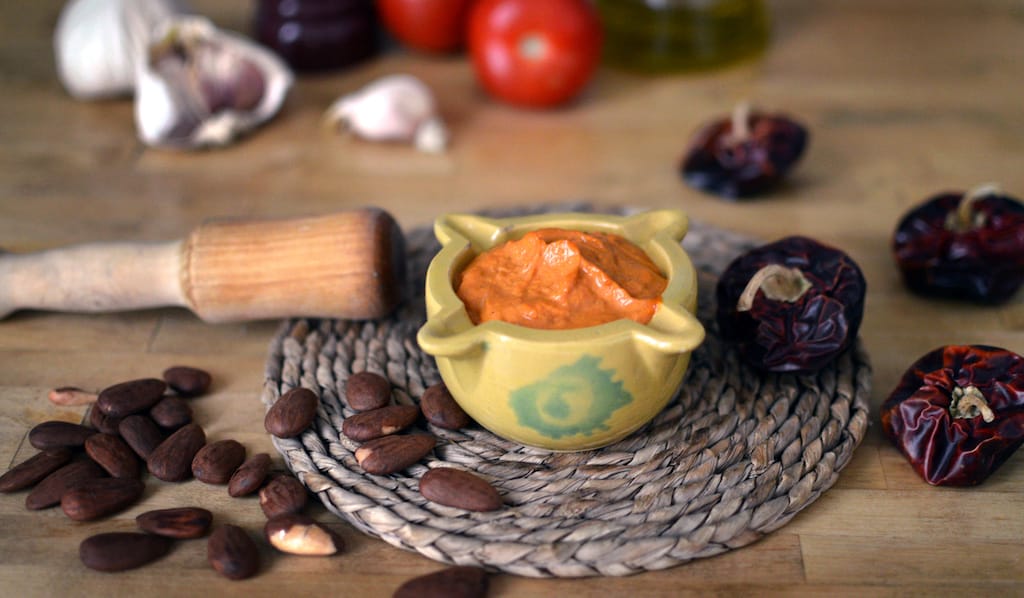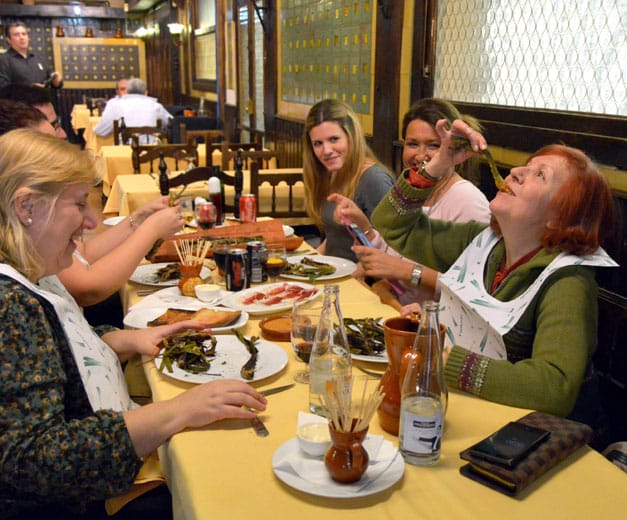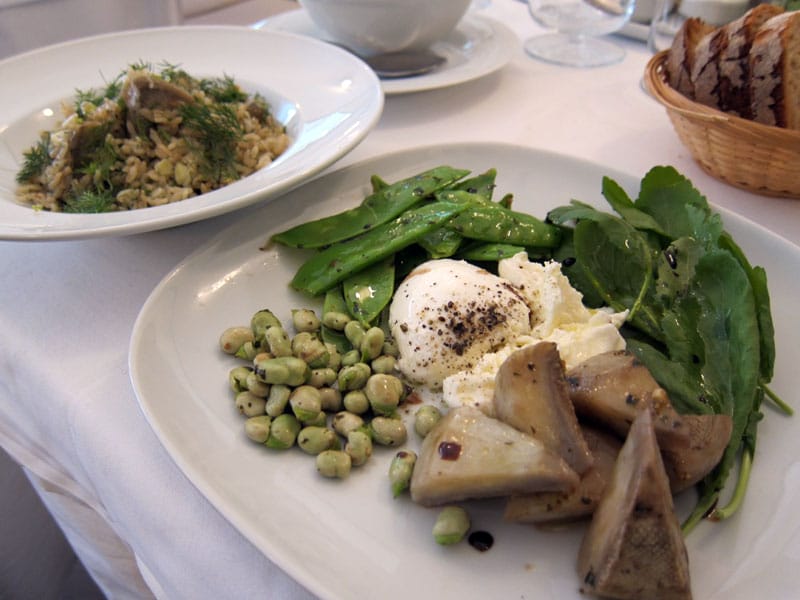There used to be a state-owned publishing house in our neighborhood with a cafeteria that served a proletariat menu that included ostri (beef stew), cold slices of beef tongue and cutlets with buckwheat or mashed potatoes. It was a stolovaya, which is the Russian word for “canteen,” but a more accurate translation would be “human fueling station of protein, carbs and vodka.” It was gutted several years ago; its ghosts now haunt the dining room of a designer hotel.
While you can find the simple stolovaya menu all over Georgia, particularly at roadhouses along the highway to the Black Sea, the workingman’s cafeteria is an institution disappearing from the Tbilisi landscape. Not that anybody’s complaining. Few people shed tears at the dematerialization of anything that represents the county’s Soviet past and stolovayas don’t rate highly in a country that takes its dining seriously. However, there is one bastion in Tbilisi’s Didube district worth noting, and not just for its retro value.
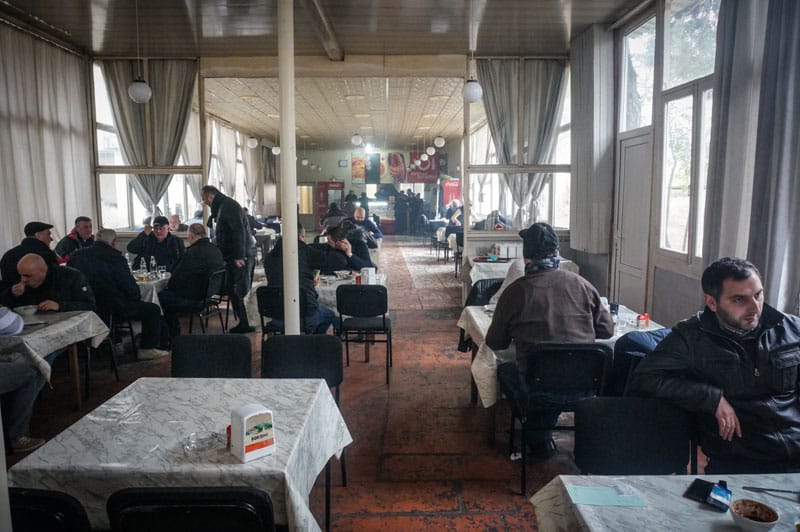
Located in the Coca-Cola bottling plant is Sasadilo Coca-Cola, a raw, no-frills, family-owned stolovaya that the late Gia Aptsiauri opened in 1995, just two years after Coke began operations in Tbilisi. It’s a busy place in a bustling neighborhood of workshops, auto repair garages and the city’s lumber and iron yards. The factory employees and local working-class stiffs make up most of the customers who jockey towards the counter – Georgians do not possess the queuing chromosome – to place their lunch orders, which are relayed back to the open kitchen in shouts, much like the iconic Greek guys at Chicago’s Billy Goat Tavern. But people do not come here for the novelty of cacophony. They come because the food is honestly good.
Gia Aptsiauri’s brothers, Vekuia and Badri, are hands-on owners, taking orders and manning the cash register. The menu board above them sets the price of most dishes at six lari – roughly US$2. Vekuia points at his brother’s shrine on a shelf and says Gia was an experienced cook whose recipes come from their native Khevsureti, a region high in the Caucasus Mountains. He insists we try their garlic-basted boiled pig’s feet and recommends their khashi – tripe soup and pig knuckles in a milky stock – but we have no hangovers to nurse and settle on a less ambitious order of kabob and kharcho.
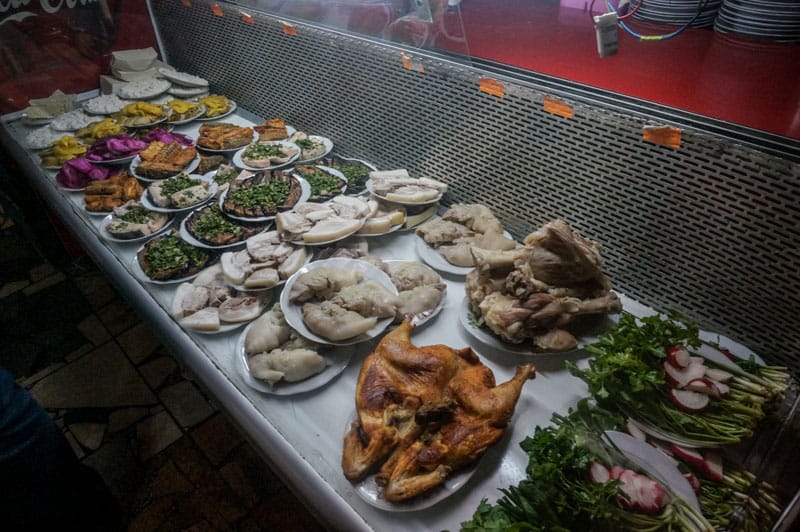
Georgia is renowned for grand feasts, monumental toastmaking and the consumption of gallons of wine in one long sitting, but the stolovaya is the other side of the gastronomic coin. For one thing, nobody drinks wine here. Two guys at the table next to us are sharing a small bottle of cognac, which in Georgia is a perfectly acceptable lunch beverage. One guy fills their glasses and the other mutters a short obligatory toast and they clink. Meanwhile, at the end of the room, five guys are plucking steaming khinkali off a platter and smoking cigarettes at the same time. It has been the same routine, hairstyles, clothes and food for over 20 years.
In a few quick minutes a waitress delivers two steaming bowls of kharcho – the prefect antidote to a cold, gray winter day. This is not the nut-based Megrelian recipe, but a spicy, rich broth of herbs, rice and fist-sized chunks of beef on the bone. It’s hard to get bad kharcho in Georgia; the trick is finding great kharcho. We dip our spoons, and from the first sip it’s clear this is no ordinary soup. It’s a drug, and we don’t come up for air until the kabobs arrive, and that’s only because we want to see if they’re as intoxicating. They’re wrapped in Armenian lavash, a thin oval flatbread. The meat is a mixture of ground pork, beef, spices and herbs. In theory they’re quite simple to prepare, they’re also really easy to mess up. They can be salty or bland, overcooked and rubbery, or undercooked and raw.
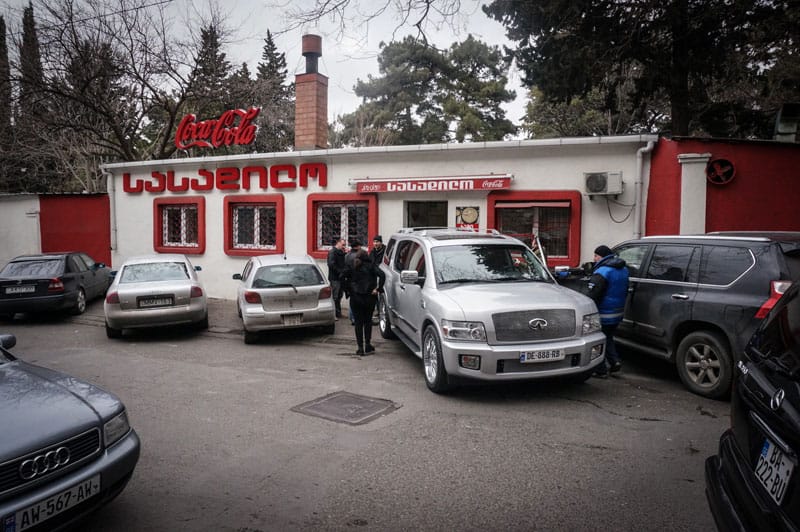
The Aptsiauri brothers serve a serious kabob – juicy, jumbo and finger-licking dangerous – but it is their kharcho that is so good, it should be illegal.
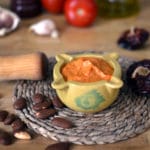 February 1, 2022 Recipe
February 1, 2022 Recipe
Served as a sauce, romesco is certainly striking: It has an intense dark orange color […] Posted in Barcelona February 11, 2015 Can Manel
February 11, 2015 Can Manel
Editor’s note: We regret to report that Can Manel has closed.
We don’t mind winter in […] Posted in Barcelona March 28, 2013 Spring (Food) Break 2013: Istanbul
March 28, 2013 Spring (Food) Break 2013: Istanbul
Update: Kantin and Gram are sadly no longer open.
Editor’s note: This is the fourth […] Posted in Istanbul
Published on March 22, 2016
Related stories
February 1, 2022
BarcelonaServed as a sauce, romesco is certainly striking: It has an intense dark orange color and a dense texture that saturates and blankets whatever you dip in it. Once in the mouth, you get a piquant touch of vinegar, which is soon enveloped by the nutty creaminess of ground almonds (or perhaps hazelnuts) and olive…
February 11, 2015
BarcelonaEditor’s note: We regret to report that Can Manel has closed. We don’t mind winter in Catalonia because it means the return of calçots, our beloved spring onions, and calçotadas, the wonderful celebrations that bring people together to eat them. While tradition usually calls for calçot eating to take place in the countryside, there are…
March 28, 2013
IstanbulUpdate: Kantin and Gram are sadly no longer open. Editor’s note: This is the fourth installment of “Spring (Food) Break 2013,” featuring our favorite foods of the spring season in each city Culinary Backstreets covers. This year’s Nevruz celebration, an ancient welcoming of spring, may be remembered for its political significance in which a peace…














































